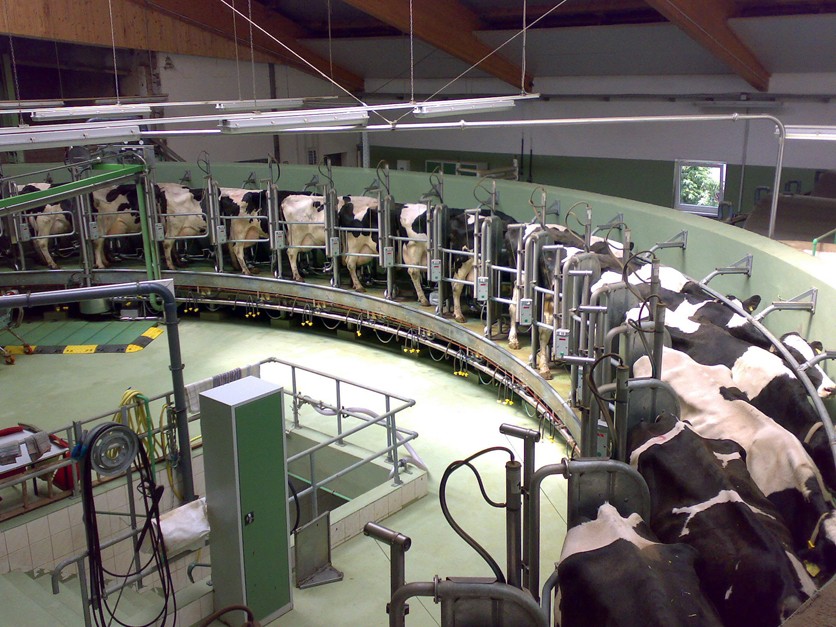
China pledged to purchase $36.5 billion in U.S. ag commodities this year under the pact. No specific amounts were laid out on a per-commodity basis, but dairy farmers were optimistic the deal would translate into large new cheese and milk powder sales, making new inroads into a vast market that had been slowly opening up to them before the U.S.-China trade war.
That hasn’t happened.
Whereas U.S. exporters were expanding access to the Chinese market just two years ago, those sales have turned anemic.
“We were doing so well in 2018 and then the combination of tariffs and African swine fever brought it down,” said Jaime Castaneda, U.S. Dairy Export Council senior vice president for trade policy. “We were growing. I knew folks that were connected with Pizza Hut and others that were actually increasing sales. We were going to be doing really well.”
From January through April in 2018, before both countries started slapping each other with tariffs, the U.S. exported 6,422 metric tons of cheese to China, according to USDEC data. For the same period in 2019, the total fell to 3,830 tons; this year, it’s dropped to 2,715 tons.
Some Chinese importers are applying for tariff waivers that the government is offering, but U.S. producers remain at a disadvantage to suppliers in New Zealand, a country that shares a free trade agreement and long history of business ties with China.
But the U.S. dairy sector is still hopeful that sales may still pick up in the second half of the year — particularly for whole milk powder. Chinese imports dropped off in February, a result of strong domestic fluid milk production and the shuttering of the food service sector at the height of the spread of COVID-19, but those purchases are returning to normal.
“There was a decline in the level of imports, but that was more than offset in April,” said Castaneda. “We don’t know what happened in May, but we assume that as China returns to normalcy, we’ll see imports at least the same as last year.”
But the trick is getting China to meet that demand by buying from the U.S.
“The bottom line here is that the number one deterrent of imports into China today is the tariffs,” Castaneda said. “There’s no doubt about that. Even though there’s this Chinese commitment to purchase more product from the United States and there is the commitment to wave some of the tariffs, we need a long-term solution in which China can make business decisions and we can go back to selling what we were selling before.”
Even U.S. exports of dry whey, a key component in swine feed that China desperately needs to help rebuild its pork sector after African swine fever decimated the country’s pig population, are down. Long before “phase one,” China dropped its 25% tariff on U.S. whey in September 2019. It was hoped then that the action would be the start of a major trade rejuvenation, but U.S. exports are still low six month later.
The U.S. has exported about 51,000 metric tons of dry whey to China so far this year. It’s an increase over the 37,000 tons last year, but well below the 92,000 tons in 2018 and 82,000 tons in 2017.
Still, there was a Chinese import spike in April — a 116% increase from April last year — so future months hold some potential.
But what U.S. dairy farmers and exporters have now is uncertainty, USDEC President and CEO Tom Vilsack told Agri-Pulse in an interview. Not only is it unclear whether “phase one” will indeed boost exports during the remainder of the year, it’s unclear if there even will be a trade pact much longer.
“It’s as uncertain as predicting the next presidential tweet,” he said. “Seriously, President (Donald) Trump could wake up tomorrow not satisfied with the performance of the Chinese and could decide to pull out of the ‘phase one’ agreement because it’s good politics.”
Just Friday Trump cast new doubt over his support of the trade pact while at the same time calling it a “great deal.”
Trump’s latest reason for bashing Beijing is the government’s attempt to strip freedom of speech from Hong Kong, bringing it in line with China’s virtual ban on any dissent, but the Chinese failure to contain COVID-19 remains a sore spot.
“We had a great deal,” Trump said. “And by the way, they are online. They’re doing OK, but the ink wasn’t dry on that deal when the plague floated in. So, I guess I view the trade deal a little bit differently than I did three months ago … Getting along with China would be a good thing. I don’t know if that’s going to happen. I’ll let you know. I think they want to get along very much with us.”
Vilsack agrees with widespread criticism that China is not yet on track to fully live up to its purchasing commitments, but stressed he hopes the Trump administration won’t pull the plug on “phase one.”
“There’s still hope, I guess and that’s why it’s important to maintain the agreement, because if we … pull the rug out from underneath this agreement, then those purchases that come at the end of the year, won’t come.”
The U.S. dairy sector isn’t writing off China — the country is too big and full of potential for growth — but it’s also far from the only market that officials like Vilsack and Castaneda are concentrating on. Southeast Asian countries like Vietnam, Indonesia, Malaysia, the Philippines and Singapore are buying more dairy and they’re increasing business with U.S. suppliers.
U.S. dairy exports — mostly milk powder — have seen eight consecutive months of growth in Southeast Asia.
“We saw a 61% increase in sales to Southeast Asia in April, which allowed us to have a pretty good month, notwithstanding the difficulties that (COVID-19) is causing,” said Vilsack.
























